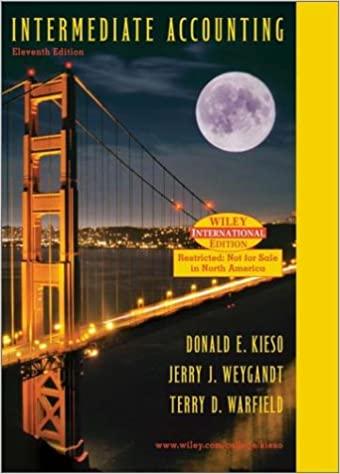Question
case study True and fair' and 'fair value' accounting and legal will-o-the-wisps by Graeme Dean and Frank Clarke This issue of Abacus goes to press
"True and fair' and 'fair value' accounting and legal will-o-the-wisps by Graeme Dean and Frank Clarke This issue of Abacus goes to press as the convergence to an international financial reporting standards (IFRS) regime begins. More than thirty years since the lengthy ges- tation of the International Accounting Standards (IAS) Committee, application and enforcement of international standards under the guidance of the International Accounting Standards Board (IASB) is nigh ... Within this setting the suggestion by many commentators (including the IASB in its public documents) that the IFRS regime is principles- rather than rules-based is con- testable. This matter has been discussed in several recent Abacus editorials and is further examined here. Whereas those promoting the principles rather than rules mantra have failed to specify what those principles are, the general tenor of their comments gives reason to imagine that such a distinction is underpinned by the qualitative cri- terion, "true and fair view' (or its equivalent) legal or professional override. Frequent recourse to 'fair value' in many IFRS adds further support to a principled approach to things commercial. It will be shown that both settings, however, illustrate the contest- able nature of what is meant by those preferring principles. Those settings represent potential difficulties in achieving convergence of an effective IFRS regime ... Richard Macve in his submission adopts a different, albeit equally critical, perspective. An extract from his conclusion is followed by an earlier summary paragraph outlining specifics: Even though it [FASB] argues that "conceptually, fair value is a market-based measure- ment that is not affected by factors specific to a particular entity' (para C2), this ED necessarily acknowledges that there may be different market prices available to different enterprises, and correspondingly different measures of fair value. It proposes to resolve this divergence by requiring that entities choose as their reference market the most advan- tageous market to which they have immediate access (para C45). This issue is discussed further below. However, the more fundamental issue of "entry' versus 'exit' prices is left undiscussed and unresolved (and the definition of fair value is therefore itself necessarily left ambiguous) primarily because there is no discussion of the underlying conceptual framework of valuation which has been fully explored elsewhere in the academic and pro- fessional literature using the concept of 'deprival value' for assets (and the related concept of "relief value" for liabilities) (e.g., Baxter, 1975, Chapter 12; AARF, 1998; ASB, 1999). It is not clear whether the Board has come to a view on these conceptual issues or whether they are still to be addressed in the conceptual phase of the project. At present the ED gives the impression that the Board is merely avoiding these issues but until they are addressed and explained the implications of the definition of fair value and related requirements of this proposed standard are necessarily left incomplete and essentially unclear. (For further discussion see Horton and Macve. 2000.) [R. Macve, FASB Submission #6, p. 2] Brief discussion of those two events reveals the difficult path ahead for the IASB countering such will-o'-the wisp issues to achieve a convergence regime that produces financial reporting comparability across countries. Source: Excerpts from Abacus, vol. 41, no. 2, 2005.
QUESTIONS 1. What do you think the authors mean by a principles- versus a rules-based system of accounting?
2. What are the measurement problems they allude to?
3. What does Macve mean by the underlying conceptual framework? What problems does he see with a 'fair value' approach?
4. Do you think there is any difference between "measures' and "values'?
Step by Step Solution
There are 3 Steps involved in it
Step: 1

Get Instant Access to Expert-Tailored Solutions
See step-by-step solutions with expert insights and AI powered tools for academic success
Step: 2

Step: 3

Ace Your Homework with AI
Get the answers you need in no time with our AI-driven, step-by-step assistance
Get Started


